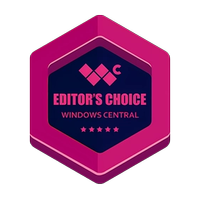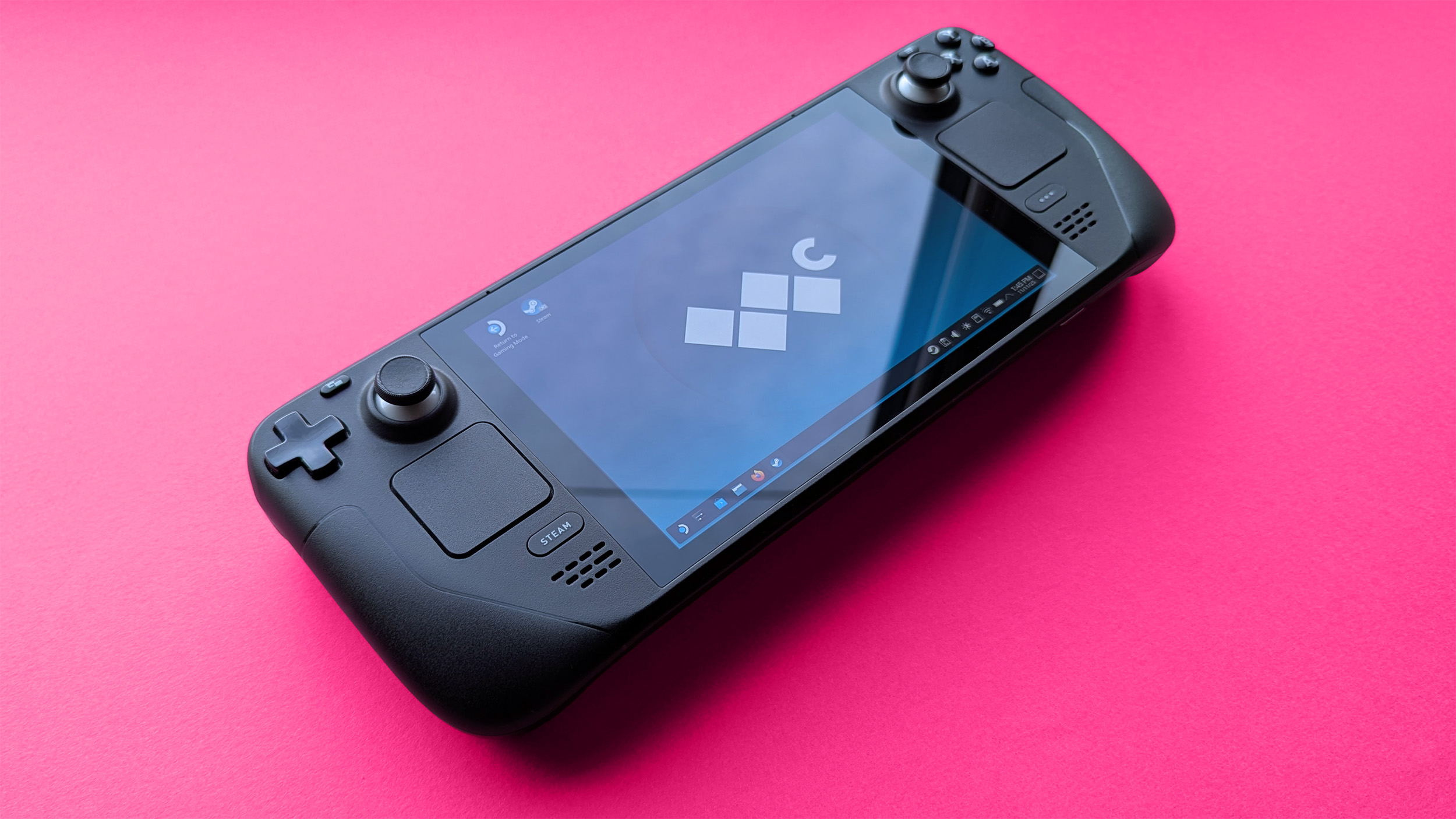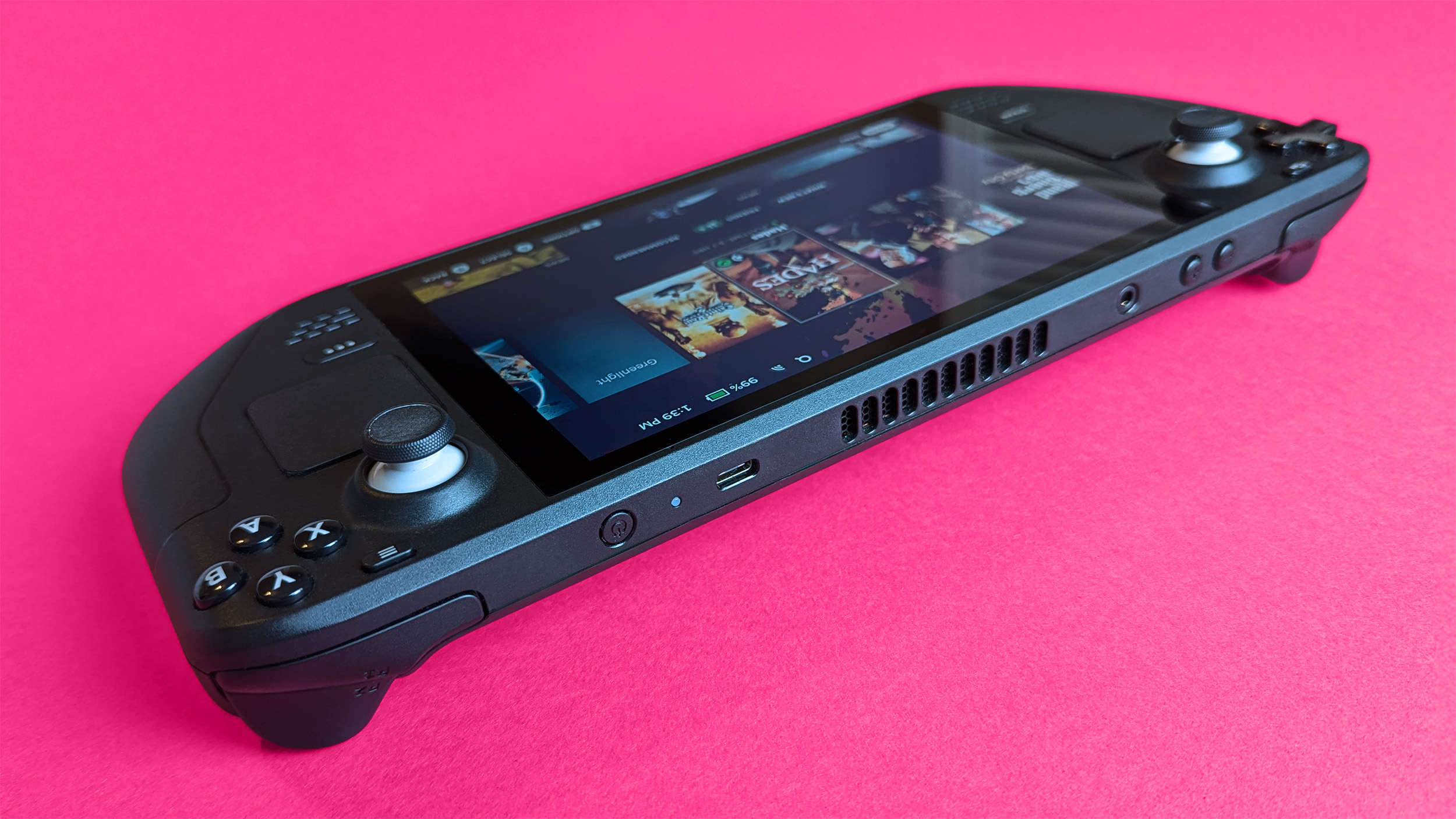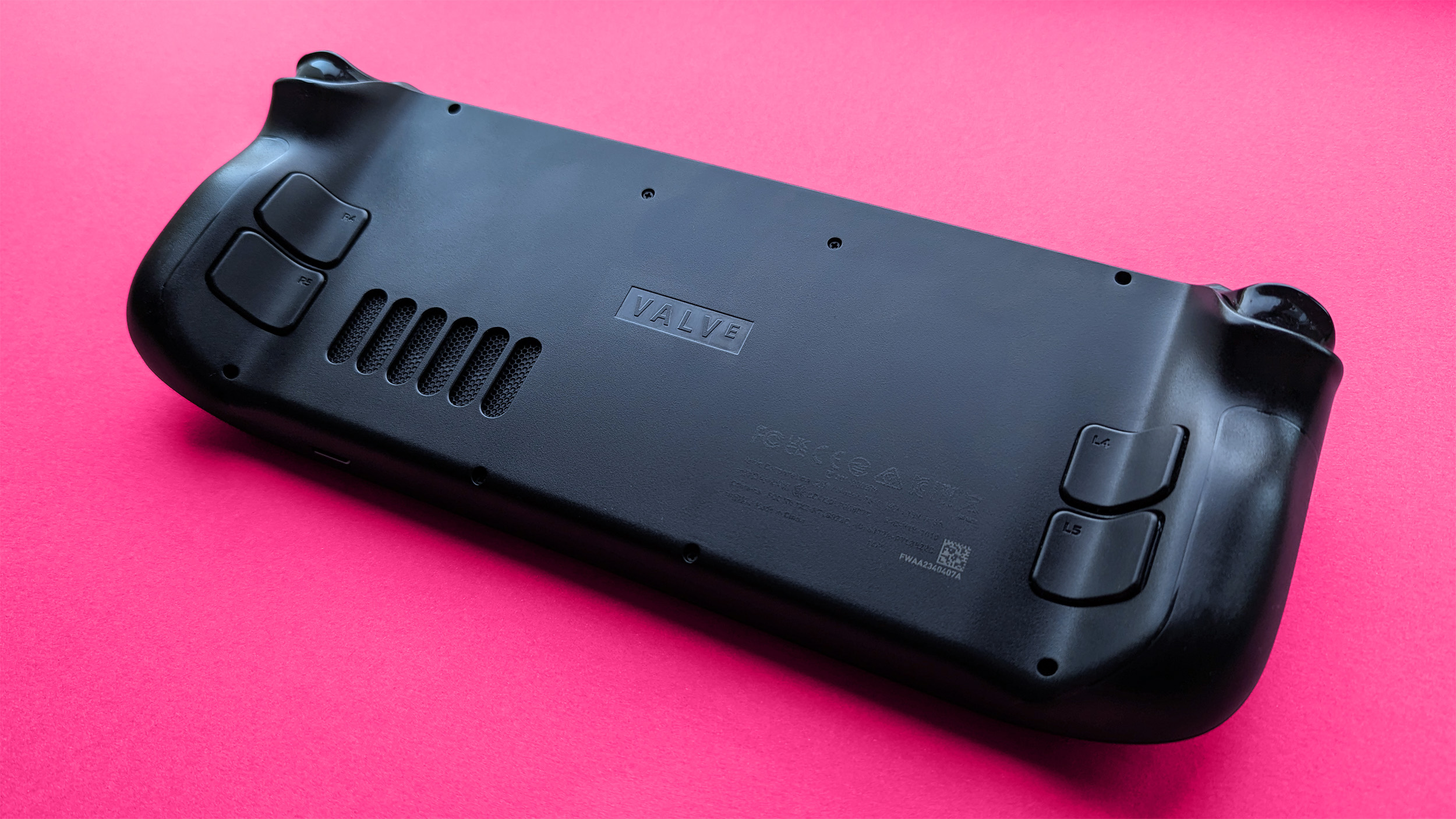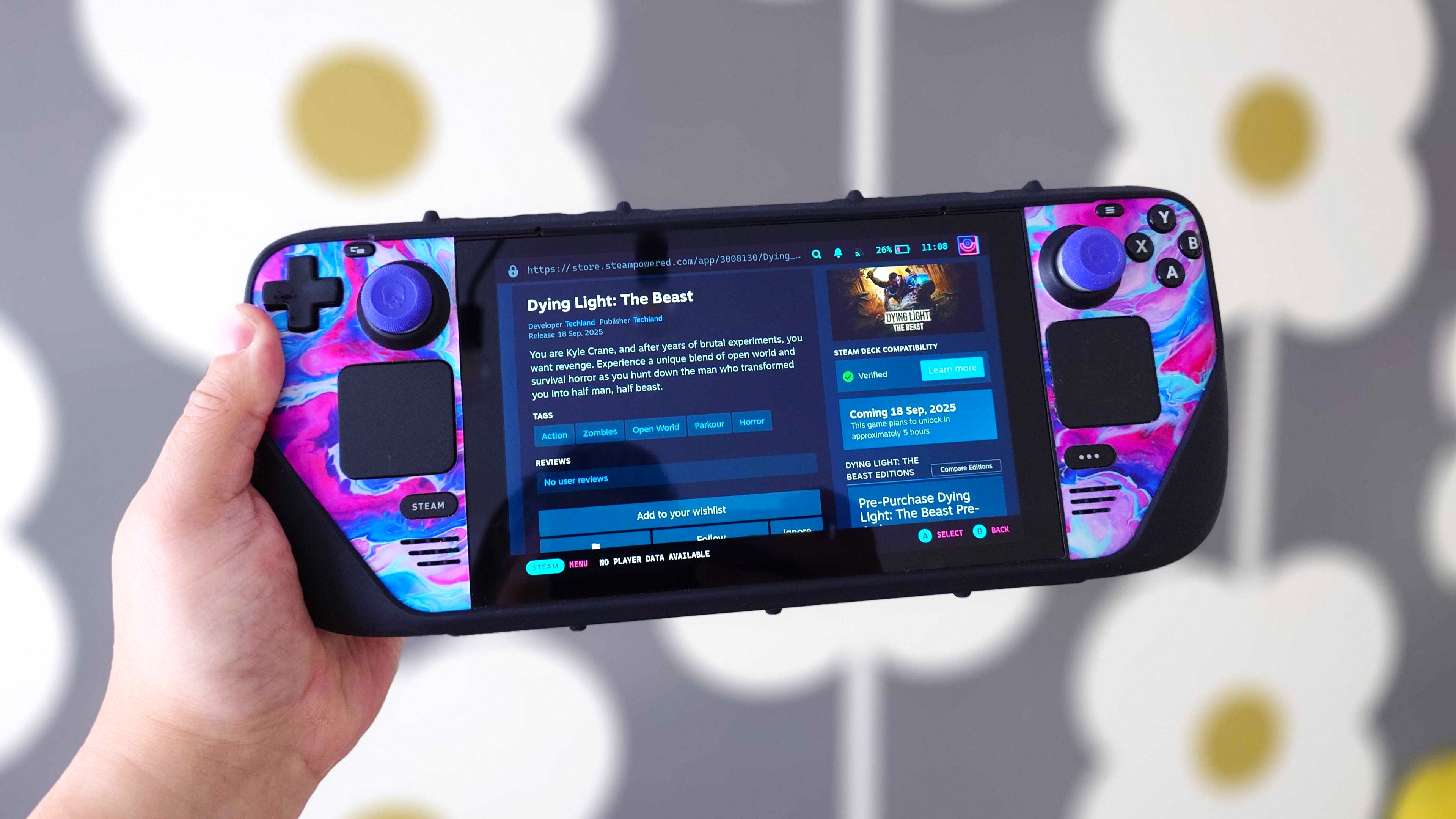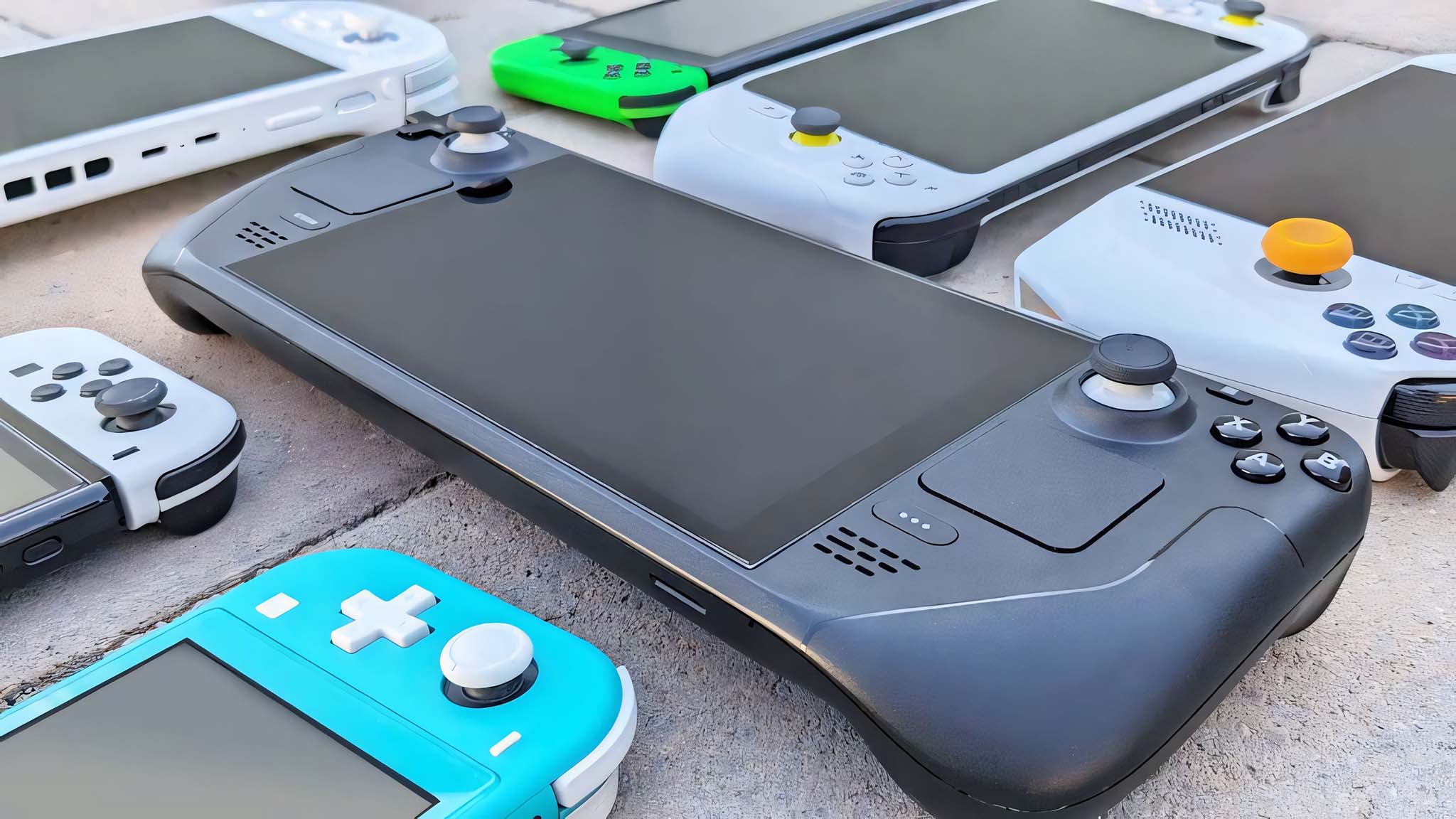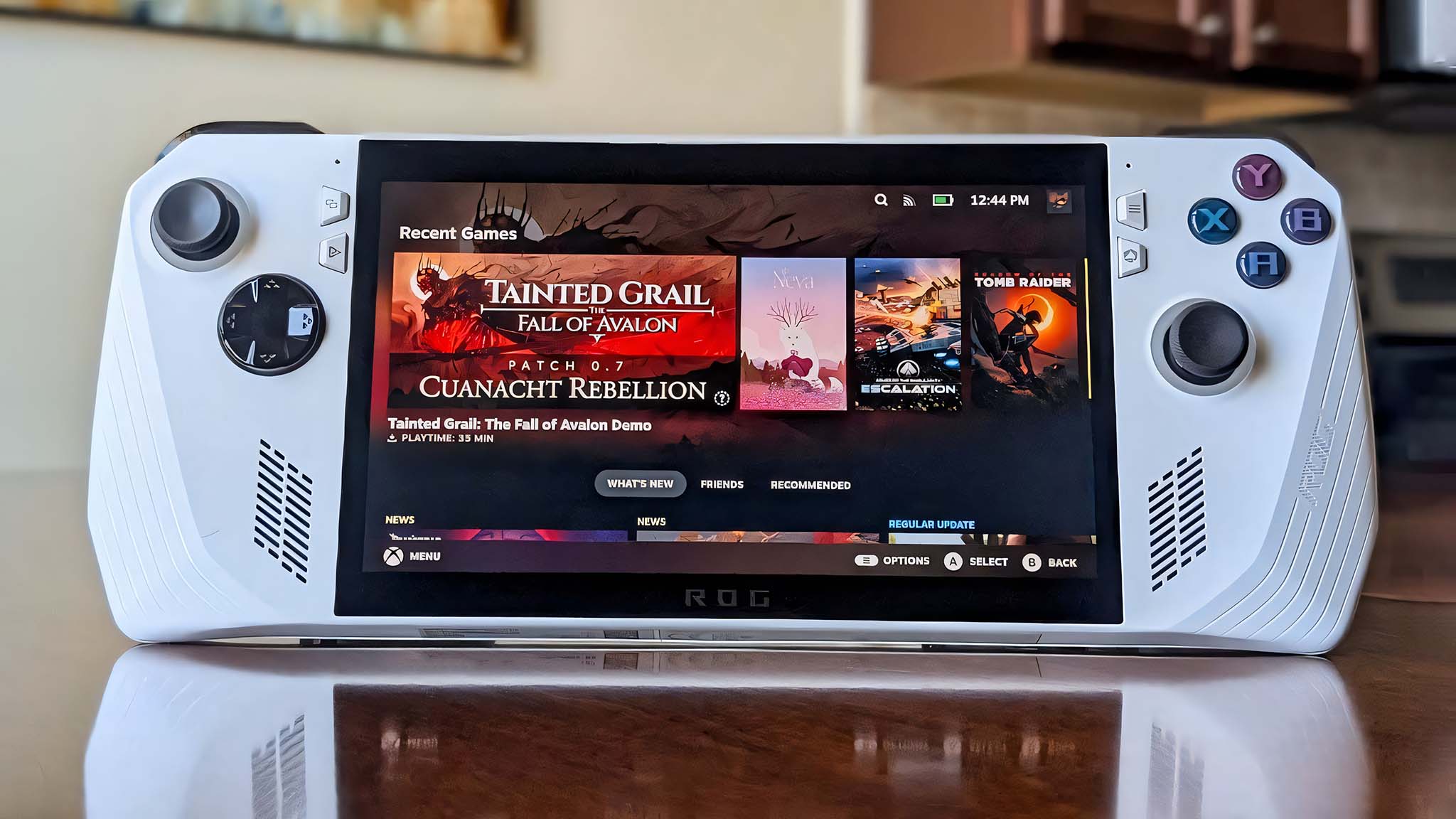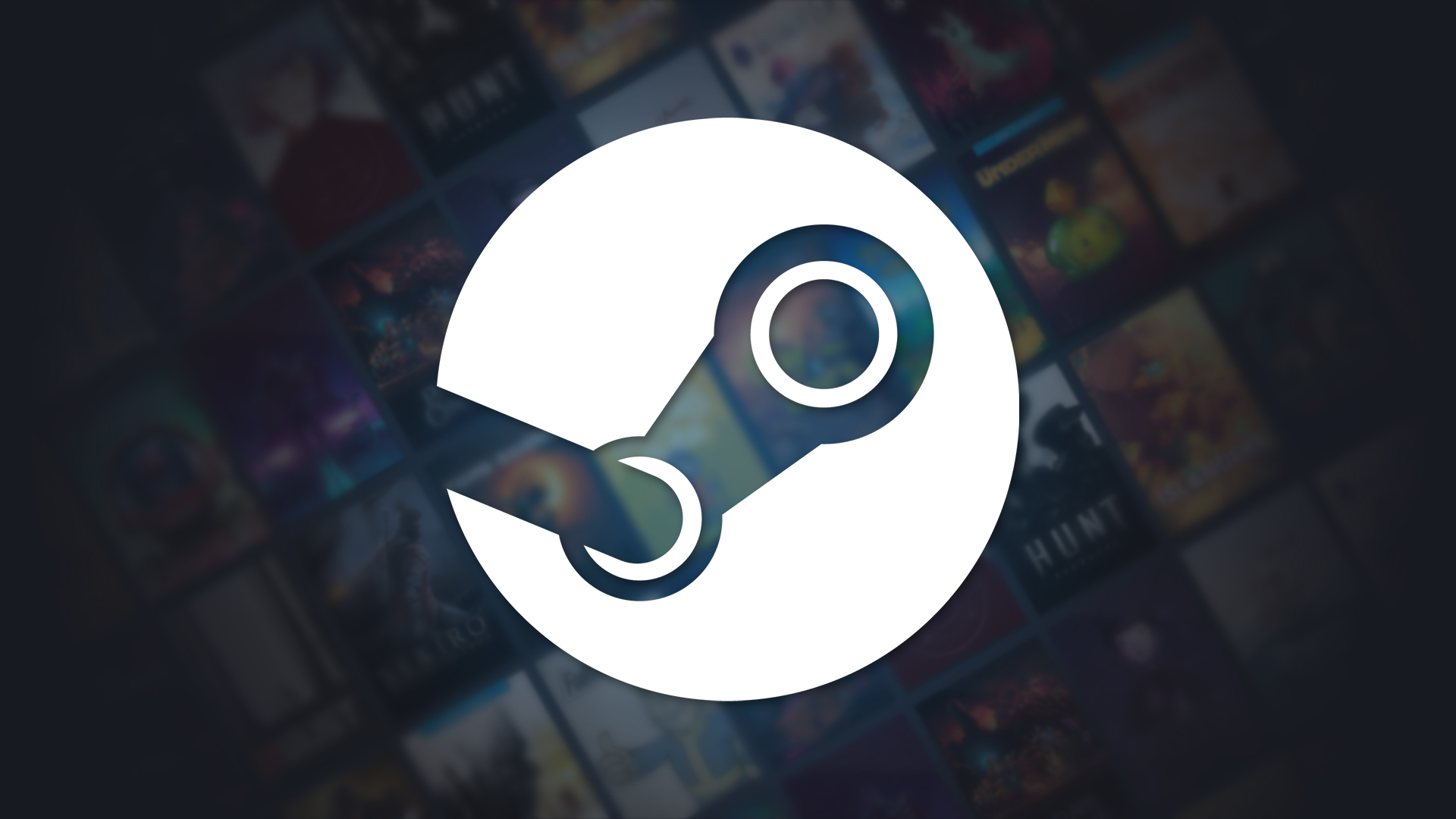Windows Central Verdict
Valve's iconic Steam Deck has aged exceptionally well and is still a perfectly capable handheld gaming PC. Its Linux-based SteamOS has matured and remains the best overall experience, streamlining customization and software maintenance with minimal tinkering compared to its Windows-based rivals. Some missing features are still locked to Windows, including Game Pass, and controversial anti-cheat issues prevent many AAA titles from running at all. Its hardware shows its age, but the software and UX keep the Steam Deck relevant.
Pros
- +
SteamOS is still the best handheld user experience
- +
Capable of playing modern games with tweaks
- +
Durable hardware and parts
- +
There's a full (albeit Linux) PC underneath its software
- +
Easily customizable
- +
Optional OLED variant
Cons
- -
Anticheat support is still mostly non-existent in major titles
- -
SteamOS is available for more powerful handhelds
- -
Quite large and heavy
- -
No native access to Game Pass (but the cloud is still an option)
Why you can trust Windows Central
Valve's Steam Deck needs no introduction. It is to handheld gaming PCs what the iPad is to tablets. It's the one that everyone thinks of first. Whenever I was using other options, such as the highly praised ASUS ROG Ally X, the first question I'd regularly be asked was, "Is that a new Steam Deck?"
I've owned one since April 2022, delivered less than two months after the first units started shipping. It's still the only thing, tech or otherwise, that I pre-ordered the moment I could. I was pumped. Having spent much of the previous two years learning about Linux and the quirks of gaming on it, I had high hopes.
Initial reactions were pretty positive across the board — including our own Steam Deck launch review. Sure, it didn't run Windows 11, but that wasn't a problem then, and it's even less of a problem now. But as three years (with some change) have passed, and the market has a lot more competition among the best handhelds, is the Steam Deck still worth it in 2025?
I think it is. I'd have no problems recommending someone buy one, even with the likes of the slightly more powerful Xbox Ally on offer alongside the SteamOS-based Lenovo Legion Go S and its monstrous, Windows-based Legion Go 2 successor, which joined the party this year. However, the conversation is certainly more complex than it was when the Steam Deck first launched.

I'm the team's resident Linux mega-fan with years of experience using the operating system for gaming alongside Windows, and I've owned the Steam Deck since the very beginning, using it regularly.
How has the Steam Deck hardware held up since 2022?
Having owned the same Steam Deck since mid-2022, I feel like I'm in a good place to talk about how it's held up. The short version is that it's done really well, and continues to do so. That's not to say there haven't been people with issues on their units, but my own has been solid throughout.
Aside from spending the last couple of years inside a $60 dbrand Killswitch case, I can't say I've been treating it particularly like a fragile baby. It gets tossed into bags, it's been used by children (a traditional test of durability), and it still looks about as good as it ever did. The only visual 'mod' it currently has is a dbrand Steam Deck skin on the front.
With the kinds of games I'm typically playing on my Steam Deck these days, I can still get around 3-4 hours of playtime.
I did use the JSAUX transparent rear case on my Steam Deck for a time, but I went back to the original for a couple of reasons: one was that I didn't like the replacement rear buttons, and the second was that it featured a heatsink, which ironically became pretty hot on the outside. So, I went back to stock parts.
The screen is still perfect on my early LCD model, and while the battery will have undoubtedly degraded over time, it's still holding up. With the kinds of games I'm typically playing on my Steam Deck these days, I can still get around 3-4 hours of playtime, which is far more than you should expect from any AAA titles.
How has SteamOS held up?
I'll tackle the elephant in the room first. The Steam Deck doesn't run Windows 11; it runs SteamOS instead, which is based on Arch Linux. "But, games are built for Windows, it can't possibly work that well, right?"
Wrong. Valve has put significant work into the Proton compatibility layer over the years, both before and since the Steam Deck launched. In the majority of cases, the hardware is more of a limitation than the software. There are exceptions, though. You can't play the modern Call of Duty games, for example. Nor can you play Fortnite, EA multiplayer titles, or Destiny 2.
But you can use the cloud, and NVIDIA even has a native Steam Deck app now for GeForce Now. Xbox Cloud Gaming on Steam Deck can also be used via standard web browsers, and there's even an official Xbox guide to setting it up.
The reason for these missing games isn't that the hardware isn't capable; it's that the anti-cheat solution simply doesn't work. The worst part is that some anti-cheat solutions, such as Destiny 2's, actually do work on Linux — but it's down to developers to enable it. Others, such as Activision's Ricochet, Riot's Vanguard, and EA's Javelin, do not support Linux at all.
Currently, these kernel-level anti-cheat solutions are only compatible with Windows 11.
Can you play as many games as people claim?
Thanks to Proton, a huge percentage (I believe at last count was around 90%) of the Steam catalog works on the Steam Deck. At least, if the hardware can handle it. Just like graphics cards, which get updated drivers targeting specific games, Proton does the same. Valve does all the hard work, so the game developers don't have to.
But as the market has matured, many have taken it upon themselves to ensure their games work well on handhelds through optimized settings. Cyberpunk 2077, Spider-Man 2, and Forza Horizon 5 are just a few examples of fairly demanding AAA titles from my own library of games that are enjoyable on the Steam Deck.
I've found (and so have others) that the sweet spot is targeting 40 FPS, for a balance of performance and battery life on the Steam Deck.
There are sacrifices to settings and frame rates, but 30 FPS is perfectly fine on a handheld. In many games, I've found (and so have others) that the sweet spot is targeting 40 FPS, for a balance of performance and battery life on the Steam Deck. Lock the refresh rate to 40Hz, and you're generally good to go.
Naturally, the focus is on Steam, but you can also play games from other stores. Thanks to the broader Linux community, there are simple ways to play your Epic Games, GOG Galaxy, and even Amazon Games on the Steam Deck, with tools such as the Heroic Games Launcher and Junk-Store.
Here are some examples from my own library, including a couple of older, less demanding games, all running at 1280x800 resolution:
Game | Settings | Performance |
|---|---|---|
Shadow of the Tomb Raider | Medium | 46 FPS (average) |
Spider-Man: Miles Morales | Medium, FSR 3 FrameGen, Vsync on | 60 FPS |
Control Ultimate Edition | Low | 45-50 FPS |
Dead Island Definitive Edition | Medium | 65-75 FPS |
Thankfully, the community database at ProtonDB is a great way to get an idea of how your games will play, along with some handy tips for optimization.
The hardware and software could be just as good as it is all day long, but it doesn't matter if the games don't run well enough. As the Steam Deck heads towards its fourth birthday in February 2026, it can't be denied that, on sheer performance, it's starting to fall behind the competition.
Repairable, upgradeable, and customizable
Mercifully, I haven't had to repair my Steam Deck in the 3+ years I've had one (compared to the two months my ROG Ally lasted before dying). Nevertheless, it's incredibly easy to repair and customize. The battery and the SSD are both easily accessible, and anyone with a screwdriver and a little time can swap them out if needed.
There's a healthy third-party market of customizations, too, to truly make your Steam Deck your own. That starts with skins and goes all the way to customizable shells, upgraded displays, hall-effect sticks, and custom buttons; there's so much out there.
Any upgrades are always done at your own risk, and my colleague, Jennifer Young, can tell a tale of woe about attempting a shell swap (with stories on the contrary, highlighting Valve's great customer service), but if you're careful, you can make your Steam Deck whatever you want it to be.
That also applies to the software, too. Unlike Windows 11, which can be customized away from its stock settings but requires a more involved process, SteamOS can be easily tweaked to look however you want. Using Decky Loader, a third-party plugin tool and store, you can go absolutely wild, changing the look and adding new features to your Steam Deck.
Yes, you can install Windows 11 on a Steam Deck instead of SteamOS if you really want to.
On my own, I've altered the look of the homescreen, applied custom colors and fonts, custom game art, a plugin to improve compatibility with my XR glasses, added custom system sounds, and found a fantastically helpful plugin that puts ProtonDB compatibility badges on every game. And yes, you can install Windows 11 on a Steam Deck instead of SteamOS if you really want to. It's just a PC, after all, and Valve has ensured it will work as best it can.
Should you still buy it?
Be it the Steam Deck LCD or the slightly upgraded Steam Deck OLED, it's still an easy handheld gaming PC to recommend. It's a little larger than some other handhelds, and quite hefty, but with the overall package of price, software, and performance, it still stands strong. I still use mine regularly, and it's single-handedly helping me play games in my backlog that I just wouldn't have done otherwise.
Still, the market has changed a lot since the first Steam Deck reviews surfaced online, not least because of Valve's behaviour. You can now put official builds of SteamOS on other handhelds, such as the ROG Ally and Lenovo Legion Go, even the new Xbox Ally, if you wish.
SteamOS is just better to use on a handheld than Windows 11, even with the recent improvements like Microsoft's dedicated full-screen mode.
This is where it gets more complicated. I have no problems recommending the Steam Deck, but if you want more performance behind the same experience, that's now possible without having to dabble with community-built Linux distros such as Bazzite.
The software is where the Steam Deck has always stood tall, even with its mostly anti-cheat-related limitations. SteamOS is just better to use on a handheld than Windows 11, even with the recent improvements like Microsoft's dedicated full-screen mode that was added to the Xbox app as part of recent OS updates.
✅You should buy it if ...
- You want a 'console-like' approach to PC gaming
- You're realistic with graphical performance expectations
❌You should not buy it if ...
- You play anti-cheat-protected multiplayer titles
- You're a regular user of PC Game Pass
The Steam Deck was built from the ground up to work like a handheld console, and you don't ever have to go into the desktop UI if you don't actually have a specific need to, such as installing Decky Loader. Windows 11 will get there — hopefully — but right now, SteamOS installed on either its native Steam Deck or overwriting a Windows 11 handheld is still my preferred choice.
It even has performance benefits, as we've seen with those aforementioned folks trying it on their Xbox Ally. SteamOS is far leaner than Windows 11, and it shows. So, if you really want a Steam Deck, go buy one. It's still a brilliant handheld gaming PC. If you want something with a bit more horsepower, grab an AMD Z1 Extreme or better in a different handheld and slap SteamOS on it.
The only people that I still wouldn't recommend buying a Steam Deck are those who are heavily invested in the Xbox Game Pass or Play Anywhere ecosystem. If your games primarily come from Microsoft in this way, you can't get them on SteamOS. Likewise, if you want to go handheld with Call of Duty: Black Ops 7, the same applies.
For everyone else, the Steam Deck is still here. And it is still glorious.
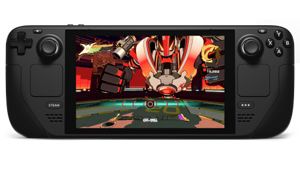
It's still one of the most affordable handheld gaming PCs and, despite its age, Valve's choice of hardware continues to hold its value years later. The Steam Deck is still worth buying.

Follow Windows Central on Google News to keep our latest news, insights, and features at the top of your feeds!

Richard Devine is a Managing Editor at Windows Central with over a decade of experience. A former Project Manager and long-term tech addict, he joined Mobile Nations in 2011 and has been found on Android Central and iMore as well as Windows Central. Currently, you'll find him steering the site's coverage of all manner of PC hardware and reviews. Find him on Mastodon at mstdn.social/@richdevine
- Ben WilsonSenior Editor
You must confirm your public display name before commenting
Please logout and then login again, you will then be prompted to enter your display name.

